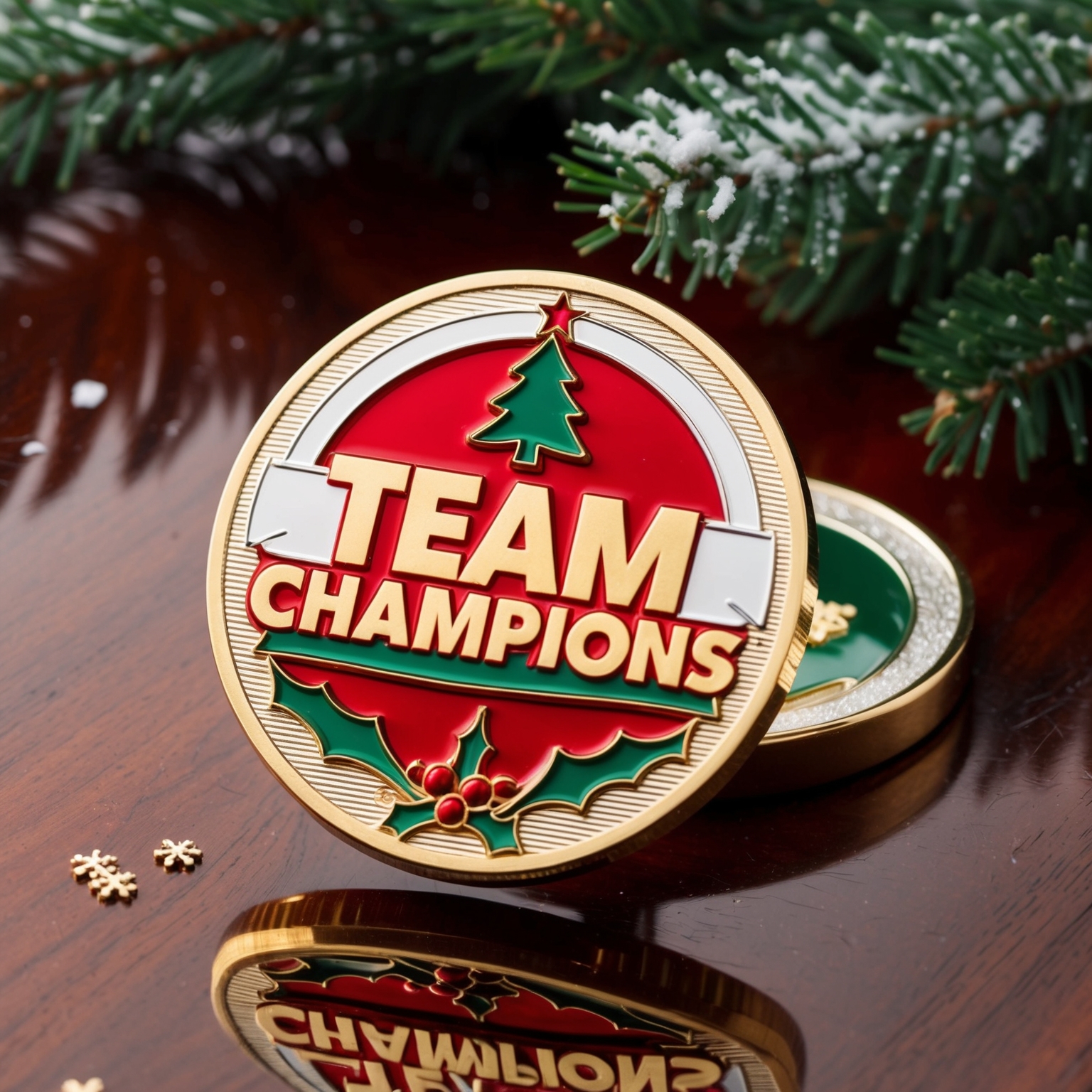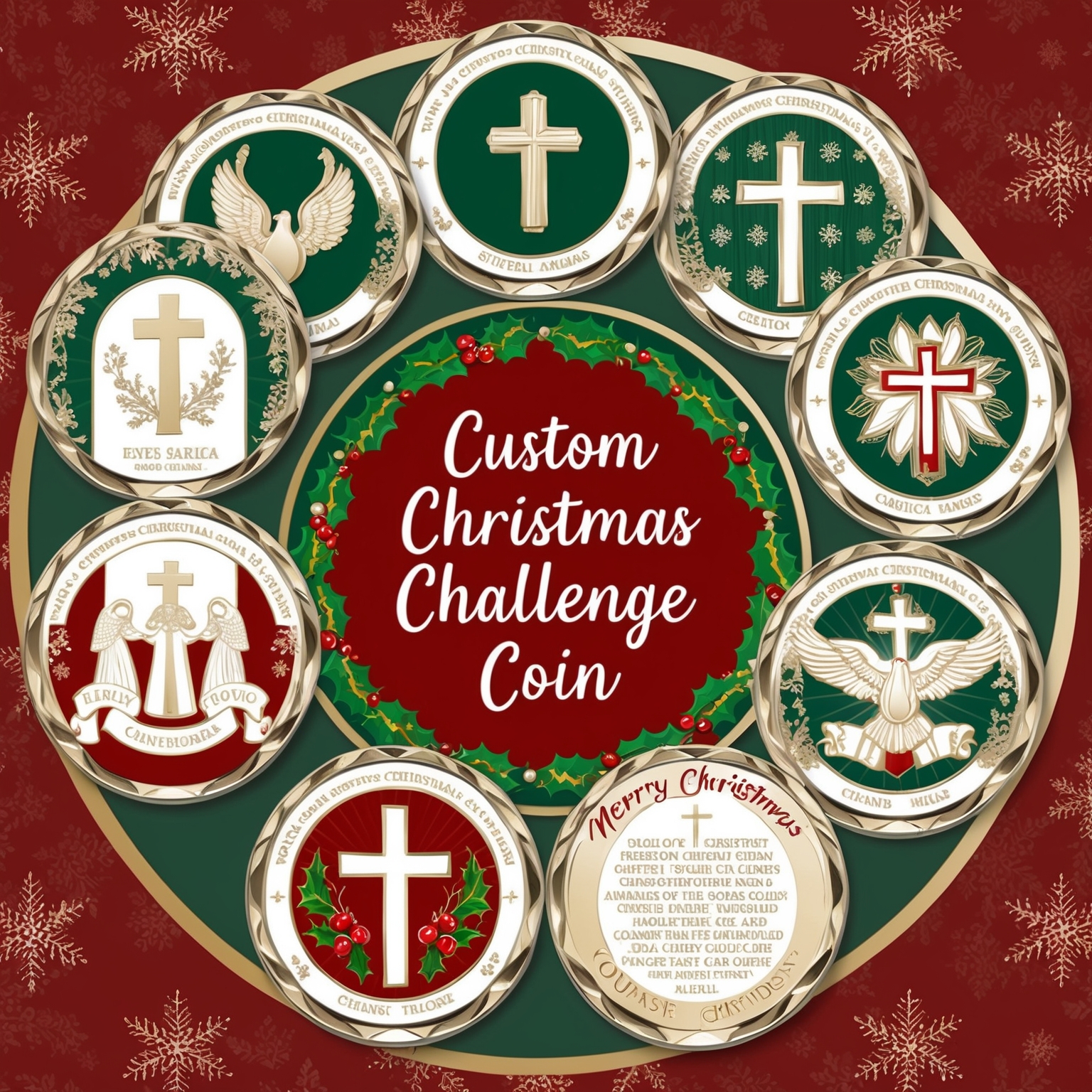Military challenge coins are revered symbols of honor, pride, and unity within the armed forces. They represent the courage, dedication, and achievements of service members, often serving as cherished keepsakes that commemorate special moments and accomplishments. Designing a challenge coin that truly honors military service is both an art and a craft, requiring thoughtful consideration of symbolism, aesthetics, and practical elements. This article explores the key aspects of challenge coin design, offering insights and best practices for creating a coin that embodies the essence of military service and pays tribute to those who serve.
Understanding the Purpose and Symbolism of Challenge Coins
The first step in designing a military challenge coin is to understand its purpose and the symbolism it will convey. Challenge coins are more than just decorative items; they are powerful symbols that carry deep meaning and significance.
- Purpose of the Coin: Determine the primary purpose of the challenge coin. Is it to recognize an individual’s service, commemorate a specific mission or event, or celebrate a unit’s heritage? The purpose will guide the design process and help determine the appropriate symbols and elements to include.
- Symbolism and Meaning: The symbols and imagery used on the coin should reflect the values, mission, and identity of the military unit or organization. Common symbols include eagles, shields, flags, and stars, which represent strength, protection, patriotism, and honor. The choice of symbols should resonate with the intended recipients and convey a message of pride and unity.
- Historical and Cultural Context: Consider the historical and cultural context of the unit or event being honored. This may include specific battles, campaigns, or traditions that are significant to the unit’s history. Incorporating these elements into the design adds depth and meaning, creating a stronger connection between the coin and its recipients.
Key Elements of Effective Challenge Coin Design
Once the purpose and symbolism are established, the next step is to consider the key elements of the coin’s design. These elements include imagery, text, layout, materials, and finishes.
- Imagery and Icons: The imagery on a challenge coin is central to its design. It should be easily recognizable and meaningful to the recipients. For example, a coin designed for a naval unit might feature an anchor, ship, or trident, while a coin for an air force unit might include aircraft or wings. The imagery should be detailed and well-crafted, capturing the essence of the unit’s identity.
- Text and Inscriptions: The text on a challenge coin often includes the unit’s name, motto, and any relevant dates or locations. The font style and size should be chosen carefully to ensure readability and complement the overall design. Latin phrases or military jargon can add a formal and traditional touch, while mission-specific slogans can highlight particular achievements.
- Design Layout: The layout of the design should be balanced and harmonious. The placement of images, text, and other elements should guide the viewer’s eye across the coin, highlighting the most important features. Avoid overcrowding the design with too many elements, as this can make the coin appear cluttered and detract from its overall impact.
- Materials and Finishes: The choice of materials and finishes can greatly affect the appearance and durability of the coin. Common materials include brass, bronze, nickel, and zinc, each offering different qualities in terms of color, weight, and feel. Finishes such as polished, antique, matte, or dual plating can add depth and character to the design. For a prestigious look, consider using precious metals like silver or gold.
- Edge Styles: The edge of a challenge coin can be customized to add an extra touch of detail. Options include reeded edges (similar to the edge of a coin), smooth edges, rope edges, and diamond-cut edges. The choice of edge style can enhance the coin’s tactile quality and overall aesthetic.
Incorporating Advanced Design Features
Modern challenge coins often incorporate advanced design features that add complexity and uniqueness to the final product. These features can enhance the visual appeal and symbolic significance of the coin.
- Three-Dimensional (3D) Designs: 3D designs add depth and texture to a challenge coin, creating a sculptural effect that highlights specific elements. This technique is particularly effective for depicting detailed imagery, such as unit insignia, vehicles, or landscapes. The raised and recessed areas create a tactile experience that can make the coin more engaging.
- Cutouts and Shaped Coins: While traditional challenge coins are round, custom shapes and cutouts can make a coin stand out. Shaped coins can reflect specific objects, such as shields, dog tags, or state outlines, while cutouts create negative space within the design. These features can add visual interest and reinforce the coin’s theme.
- Color and Enamel: Adding color through enamel fills can enhance the visual appeal of a challenge coin. Soft enamel fills create a textured surface with recessed areas, while hard enamel fills result in a smooth, polished finish. The use of color can highlight specific elements, such as flags, emblems, or insignia, making them more vibrant and eye-catching.
- Glow-in-the-Dark and UV Elements: For a unique and modern touch, consider incorporating glow-in-the-dark or UV-reactive elements. These features can make certain parts of the coin visible in low-light conditions or under UV light, adding an element of surprise and intrigue.
The Design and Production Process
The process of designing and producing a challenge coin involves several steps, each requiring careful attention to detail to ensure a high-quality final product.
- Concept Development and Consultation: The design process begins with concept development and consultation. This stage involves discussing the purpose, symbolism, and desired elements of the coin with the client (often a military unit or organization). The designer provides guidance on design options, materials, and features, helping to refine the concept.
- Design Mockups and Approval: The designer creates digital mockups of the coin, incorporating the agreed-upon elements. These mockups allow the client to visualize the design and provide feedback. Revisions may be made to adjust the layout, imagery, text, and colors until the client is satisfied with the final design.
- Die Creation and Prototyping: Once the design is approved, a die is created. The die is a metal mold used to strike the design into metal blanks. A prototype coin is often produced at this stage, allowing the client to see and feel the coin in physical form. This step ensures that the final product meets the desired specifications.
- Production and Quality Control: After the prototype is approved, the full production run begins. Coins are struck, plated, enameled, and finished according to the design specifications. Quality control checks are conducted throughout the production process to ensure that each coin meets the required standards of quality and detail.
- Packaging and Presentation: The final step involves packaging the coins for delivery. Custom packaging options, such as presentation boxes or velvet pouches, can enhance the coin’s presentation and protect it from damage. The packaging can also include certificates of authenticity or informational inserts, providing context and background about the coin’s design and significance.
Best Practices for Designing a Military Challenge Coin
Creating a challenge coin that truly honors military service requires a thoughtful approach and attention to detail. Here are some best practices to keep in mind:
- Know Your Audience: The design should resonate with the intended recipients. Understanding the unit’s culture, values, and traditions is crucial in creating a design that will be meaningful and appreciated.
- Balance Tradition and Innovation: While it’s important to honor traditional elements and symbols, don’t be afraid to incorporate modern features and innovations. This balance can create a coin that is both timeless and contemporary.
- Prioritize Quality: Invest in high-quality materials and craftsmanship to ensure the coin’s durability and aesthetic appeal. A well-made coin will stand the test of time and be cherished by recipients.
- Tell a Story: The design should tell a story or convey a message. Whether it’s commemorating a specific event, honoring a particular achievement, or celebrating a unit’s heritage, the coin should communicate its significance clearly and effectively.
- Seek Feedback: Involve key stakeholders in the design process, including members of the unit or organization. Their input can provide valuable insights and ensure that the final design accurately represents the intended message.
Case Studies: Notable Military Challenge Coin Designs
To illustrate the principles of effective challenge coin design, let’s explore a few notable examples from military history:
- The 82nd Airborne Division Coin: The 82nd Airborne Division’s challenge coin features the division’s iconic “AA” insignia, symbolizing “All American.” The coin includes an image of a paratrooper and a detailed depiction of the division’s patch. The use of bold colors and a clean layout makes the coin visually striking and easily recognizable.
- The Navy SEALs Coin: The Navy SEALs challenge coin is renowned for its intricate 3D design, featuring the SEAL Trident emblem with a raised, polished finish. The reverse side includes the SEALs’ motto, “The Only Easy Day Was Yesterday,” along with imagery of a diving mask and fins. The coin’s weight and detailed craftsmanship reflect the elite status of the SEALs.
- The United States Marine Corps (USMC) Coin: The USMC challenge coin often features the Marine Corps emblem—a globe, anchor, and eagle—along with the motto “Semper Fidelis” (Always Faithful). The use of an antique bronze finish gives the coin a classic and distinguished look, while the detailed engraving highlights the emblem’s iconic elements.
The Future of Military Challenge Coin Design
As technology and design trends continue to evolve, the future of military challenge coin design is likely to see new innovations and creative possibilities.
- Digital Integration: The integration of digital elements, such as NFC chips or QR codes, could add interactive features to challenge coins. These technologies could provide access to digital content, such as videos, photos, or historical information, enhancing the storytelling aspect of the coin.
- Sustainability and Ethical Considerations: As environmental awareness grows, there may be an increased focus on using sustainable and ethically sourced materials in coin production. This could include recycled metals, eco-friendly packaging, and responsible manufacturing practices.
- Global and Cross-Cultural Influences: With the globalization of challenge coin culture, we may see more designs that incorporate cross-cultural elements. This could include symbols, languages, and artistic styles from different cultures, reflecting the diverse backgrounds of service members.
Conclusion
Designing a military challenge coin that truly honors service is a nuanced and creative endeavor. It requires a deep understanding of the symbolism, traditions, and values of the military community. By thoughtfully considering elements such as imagery, text, materials, and advanced features, designers can create coins that are not only visually stunning but also rich in meaning and significance. As challenge coin design continues to evolve, these timeless tokens will remain a cherished way to recognize and celebrate the dedication and bravery of those who serve.
If you are interested in designing your very own high-quality custom challenge coins feel free to call us at 855-471-6752 or fill out one of our FREE QUOTE FORMS.



